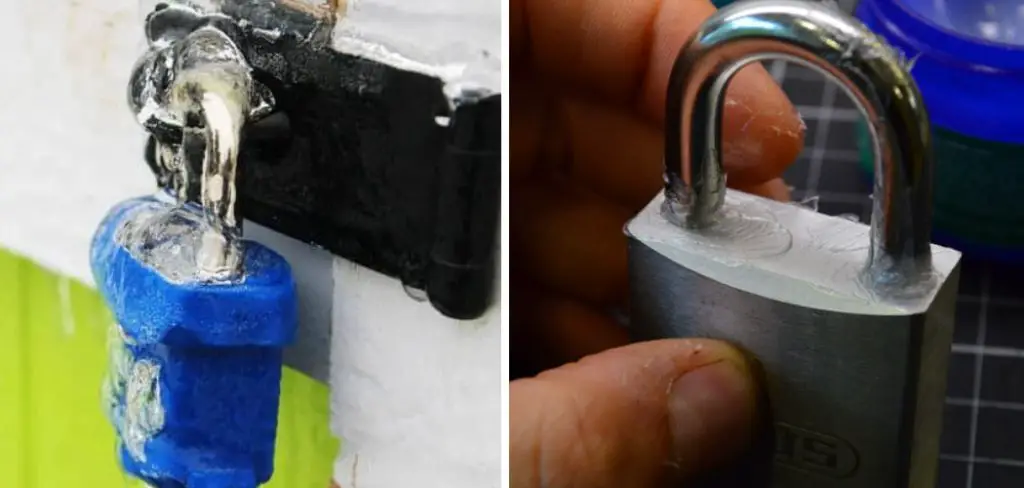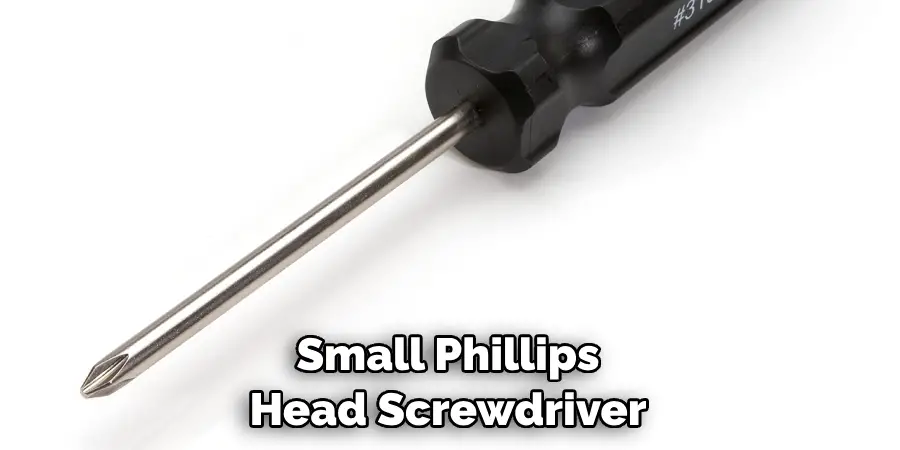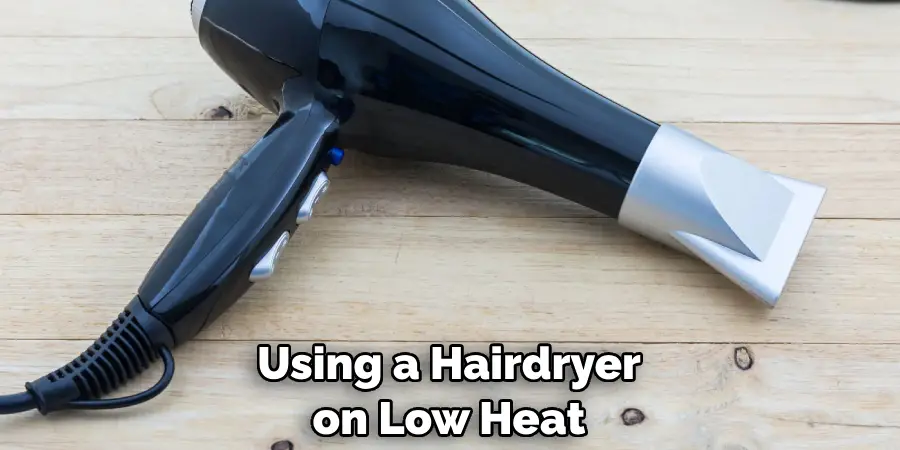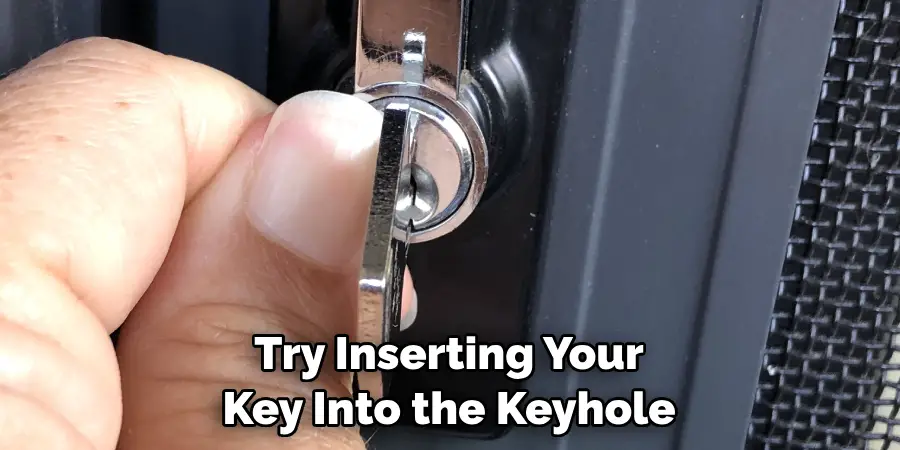Dealing with a frozen padlock can be a frustrating experience, especially when you’re in a hurry or facing adverse weather conditions. A frozen padlock occurs when moisture infiltrates the locking mechanism and then freezes due to cold temperatures, causing the lock to jam.
Whether it’s your home’s front door, a shed, or a locker, a frozen padlock can disrupt your plans and impede your daily routine. However, fret not—there are effective and straightforward methods to unfreeze a padlock and regain access.

In this article, we will explore various techniques and tips on how to unfreeze padlock safely and swiftly, ensuring you can overcome this inconvenience and regain control over your security. From using everyday household items to specialized lubricants, we’ve got you covered to tackle this common issue with ease.
Problems With Frozen Padlock
The most common issue that arises when it comes to a frozen padlock is the inability to open it. This can cause frustration and potentially lead to costly damage if force is used in an attempt to open the stubborn lock. Another problem associated with using a frozen padlock is that the key may not fit into the keyhole or turn properly, resulting in further difficulty opening the lock.
To prevent your padlock from freezing in the first place, it is important to store it in a temperature-controlled environment. Keep your padlock away from any moisture or extreme cold and hot temperatures. This will reduce the chances of your lock becoming frozen and ensure that it remains reliable for years to come.
If you do find yourself with a padlock that has become frozen, there are some steps you can take to attempt to unfreeze it. First, try lubricating the lock with a graphite or silicone-based lubricant. This should help to loosen up any rust or dirt that may have accumulated over time and prevent further corrosion from occurring.
Be sure to only use a small amount of the lubricant and work it into the keyhole. Once you have done this, try inserting your key again to see if it will turn. If the key still does not fit or turn easily, you may need to take more drastic measures such as heating the lock with a hair dryer or submerging it in hot water.
Safety Considerations when Dealing with Padlock in Cold Weather
When dealing with padlocks in cold weather, it is important to take certain safety precautions. The metal can become brittle and easily break if handled roughly, so use caution when attempting to unfreeze the locking mechanism.

Additionally, the extreme temperatures can cause damage to materials like plastic or rubber that are part of the lock. Ensure that these parts are warmed up slowly using a hairdryer on low heat, taking care not to melt or burn the parts.
Also take into consideration any potential frostbite risks caused by coming in contact with the frozen lock for too long. Wear protective gloves and keep your hands warm while attempting to unfreeze the locking mechanism.
If possible, consider using an anti-freezing lubricant to help open the lock. These lubricants can help reduce the amount of time it takes to thaw out a frozen padlock and make the process much easier. Be sure to read all instructions carefully before using any product, as some contain substances that can be hazardous if used improperly.
Once you have successfully unfrozen the padlock, take steps to prevent it from freezing in the future. Apply an anti-corrosive lubricant to the lock, and keep it in a warm environment when temperatures drop. This will help extend the life of your padlock and ensure that you can rely on it for years to come.
10 Steps How to Unfreeze Padlock
1. Gather the Necessary Tools and Materials
Before attempting to unfreeze a padlock, it is important to gather the necessary tools and materials. You will need a blow dryer, small Phillips head screwdriver, lubricant (such as WD-40), and a cloth or paper towel. It is also helpful to have an extra key in case you are unable to unfreeze the lock.
2. Inspect the Lock
Once you have gathered all of your supplies, inspect the lock for any visible signs of damage or corrosion. If you notice any damage or corrosion, it is best to replace the lock rather than attempting to unfreeze it.
3. Apply Heat
Using your blow dryer, apply heat directly to the area around the keyhole for several minutes. This will help to thaw out any frozen parts inside of the lock that may be preventing it from opening. Make sure not to hold the blow dryer too close as this could cause further damage to the lock if done incorrectly.

4. Insert Key
Once you have applied enough heat, try inserting your key into the keyhole and turning it gently back and forth in order to help break up any remaining ice inside of the lock that may be preventing it from opening properly.
5. Apply Lubricant
If your key still does not turn after applying heat and inserting your key into the keyhole, then you should try applying some lubricant such as WD-40 directly into the keyhole in order to help loosen up any remaining ice inside of the lock that may be preventing it from opening properly.
6. Wipe Away Excess Lubricant
Once you have applied lubricant into the keyhole, use a cloth or paper towel to wipe away any excess lubricant that may be sticking out of the sides of the lock in order to prevent dirt or debris from entering into it which could cause further damage if left unchecked.
7. Insert Key Again
After wiping away excess lubricant, try inserting your key again and turning it gently back and forth in order to help break up any remaining ice inside of the lock that may be preventing it from opening properly.
8. Try Multiple Keys
If one key does not work then try using another one as different keys can sometimes fit differently within locks due to slight variations in their shape or size which can sometimes make them more effective at unlocking certain locks than others depending on their design and construction materials used in its manufacturing process.

9. Try Different Angles
If multiple keys do not work then try turning them at different angles while they are inserted into the lock in order for them to catch onto something inside of its mechanism which could potentially allow them to turn freely within its internal components thus unlocking its mechanism and allowing access once more.
10. Replace Padlock If All Else Fails
If none of these steps work then unfortunately there is no other option but to replace your padlock with an entirely new one as this would be much easier than attempting repairs on an old padlock whose mechanism has been severely damaged by freezing temperatures over time due its lack of proper maintenance when exposed outdoors throughout various weather conditions throughout each season.
Things to Consider When Unfreeze a Padlock
- Familiarize yourself with the padlock you are trying to unfreeze. If you are unfamiliar with how it works and don’t know what kind of padlock it is, you should research it online or get help from a professional locksmith to avoid damaging the lock further.
- Inspect your padlock before attempting to unfreeze it. Check for any signs of corrosion, rust, or physical damage that may have caused the lock to freeze shut in the first place. You want to make sure no further damage will be done when you attempt unfreezing.
- Make sure you have the right tools handy to unfreeze your padlock. Depending on how badly frozen it is, you may need to use lubricants, a blow dryer, or even a hammer to get the job done.
- If your padlock is severely frozen and not responding to other methods of unfreezing, you may want to consider replacing it altogether. It is better in the long run than risking further damage by trying to unfreeze an unresponsive lock.
- If your padlock does not have a keyhole, you may need to resort to using bolt cutters to get the lock open. This should be used as a last resort and only if all other methods of unfreezing it have been exhausted.
- Keeping your padlocks properly maintained can help prevent them from freezing in the first place.

Conclusion
In conclusion, figuring out how to unfreeze a padlock can take some trial and error. However, if you know the right steps to take, it can be a simple process. To start, make sure all moisture is gone and then apply a quality de-icer product to the padlock’s mechanisms.
Give it time to work before trying other methods like heat or lubrication. If those don’t work, then consider using more forceful methods like lock picking or calling a locksmith for help.
Regardless of which method you choose, having reliable information and performing some safety checks ahead of time can save you from costly mistakes later on.
Now that you’ve gained insight into how to unfreeze padlock, don’t wait until your key becomes stuck in the dead of winter! Utilize these tips today and keep having reliable access wherever it matters most.
